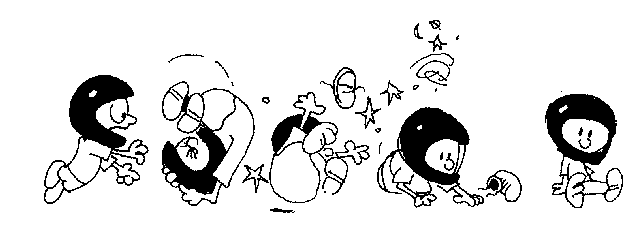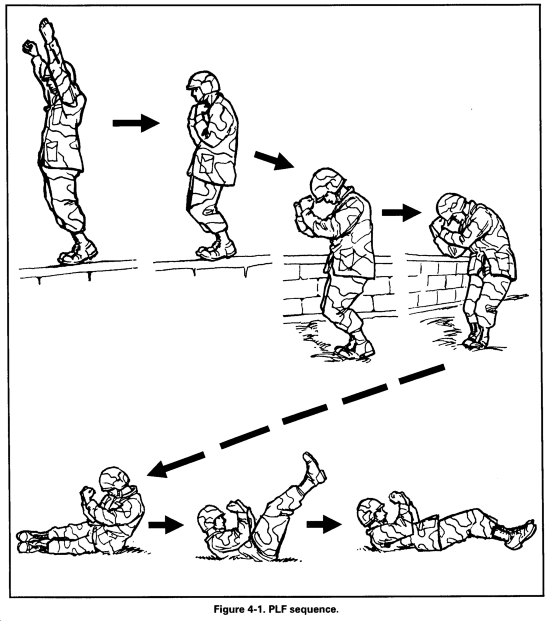Are you tired of landing like this?

Contact points for Parachute Landing Falls (PLFs)
The Parachute Landing Fall consists of five points of contact;
PLFs will be demonstrated in class, you will be required to do one with your instructor.
How to do PLF's
1. Move the body to form an arc as the PLF continues. Start the PLF when the balls of the feet touch the ground. Do not hesitate on the balls of the feet. 2. Complete the PLF by falling in the direction of drift, and lay the (body) points of contact on the ground. 3. Keep the chin on the chest and keep the neck tense throughout the PLF. 4. Use a twisting-bending motion, beginning in the hips, to push the knees around, exposing the calf and thigh (right or left) as the legs give with the impact.

Parachute Landing Fall Problems
|
Error |
Cause |
Correction |
|
Feet Apart. |
Anticipation of landing. |
Moderate tension in the legs. Press the legs together. |
|
Drawing the legs up beneath the buttocks. |
Anticipation of landing. |
Moderate tension in the legs. Point the balls of the feet toward the ground. Proper landing attitude. |
|
Missing contact with calf and thigh. |
Hesitation on balls of the feet. Straightening legs after absorbing impact. Failure to twist and bend sharply when balls of feet contact the ground. |
Do not hesitate. Continue to fall. Do not straighten the legs after absorbing landing impact. Bend and twist the torso vigorously upon contact. This motion pushes the knees around and forces the calf and thigh to the ground. |
|
Knees into the ground. |
Hesitation upon landing. Bending forward. Knees relaxed excessively. Normally occurs on front fall. |
Do not hesitate upon landing. Continue to fall. Apply the twisting motion vigorously. Keep the legs moderately tense. |
|
Elbows hit the ground. |
Leaning forward. Failure to twist torso. Breaking fall with elbows. |
Twist and bend the torso upon contact. Pull the elbows up in front of the chest. |
|
Head strikes ground. |
Relaxing the neck or raising the head. Missing points of contact. |
Keep the head lowered on the chest and maintain neck tension throughout the fall. Twist and bend vigorously as the fall continues. |